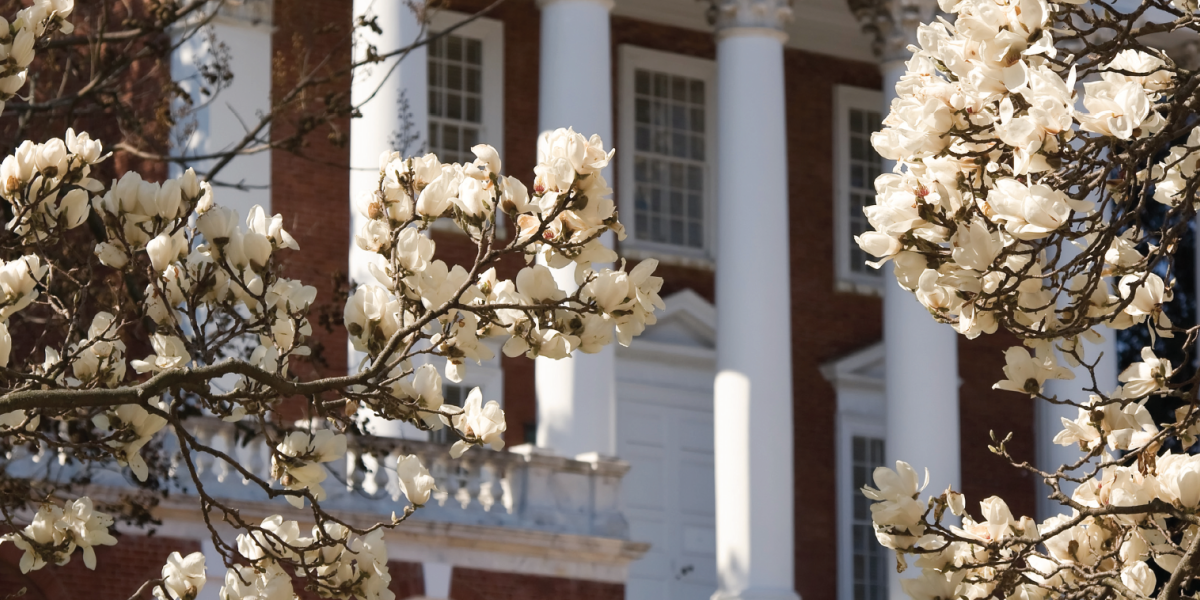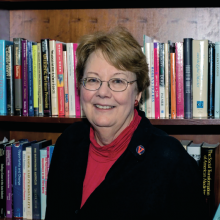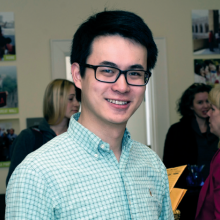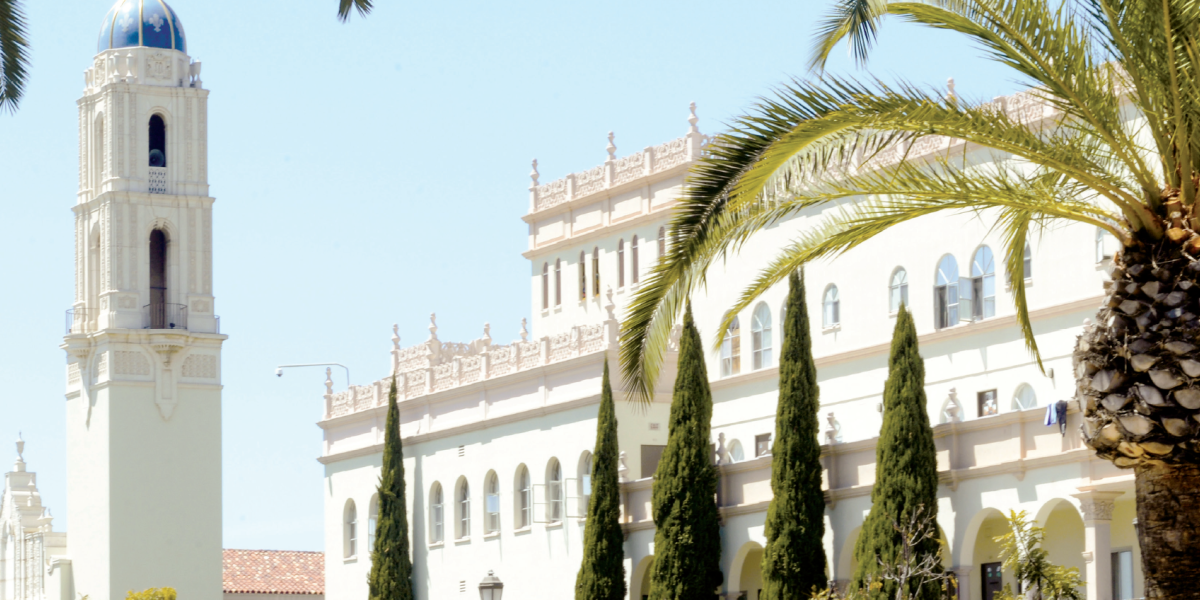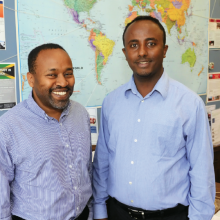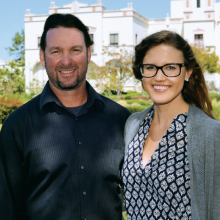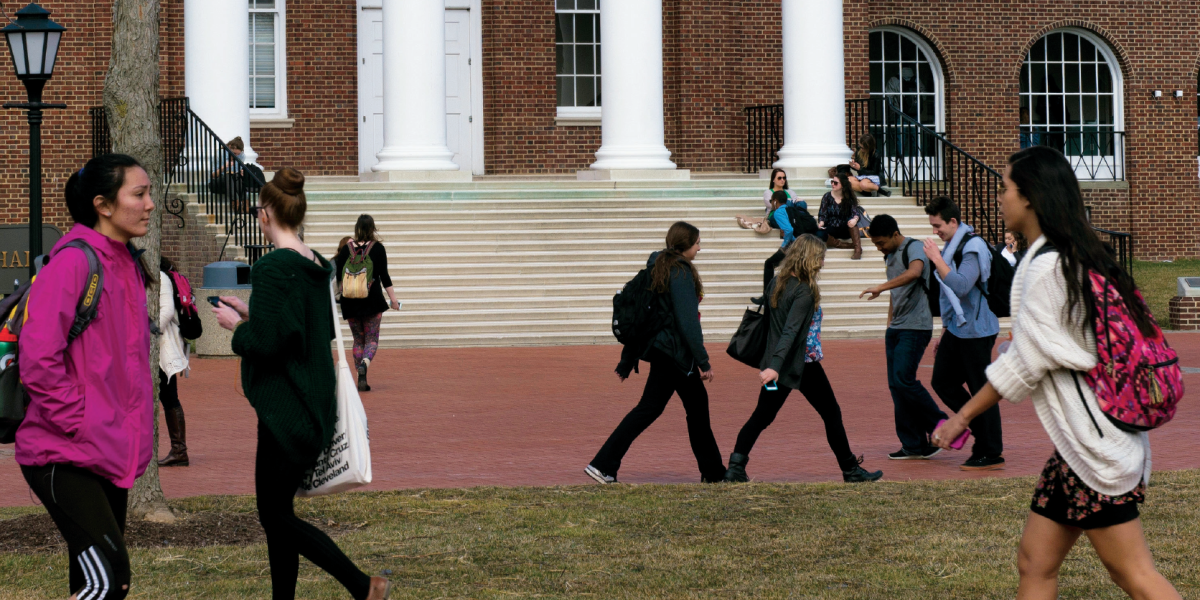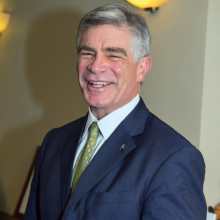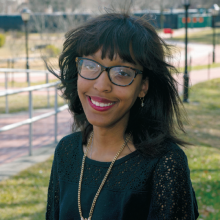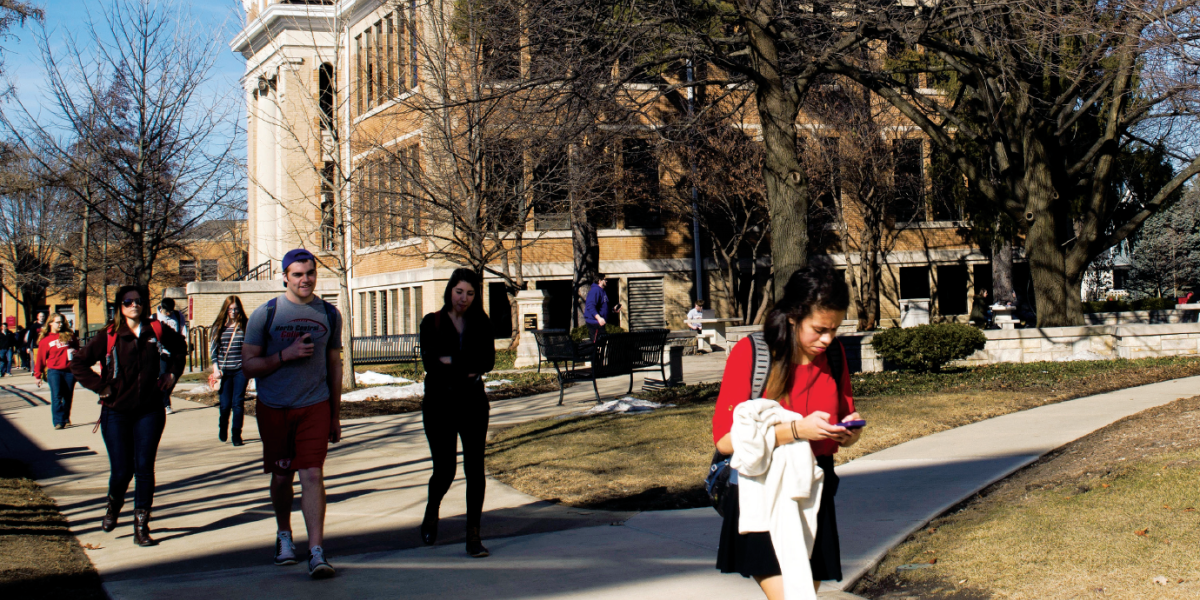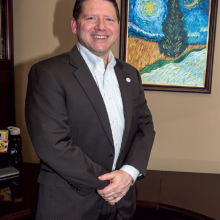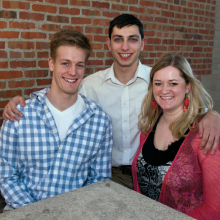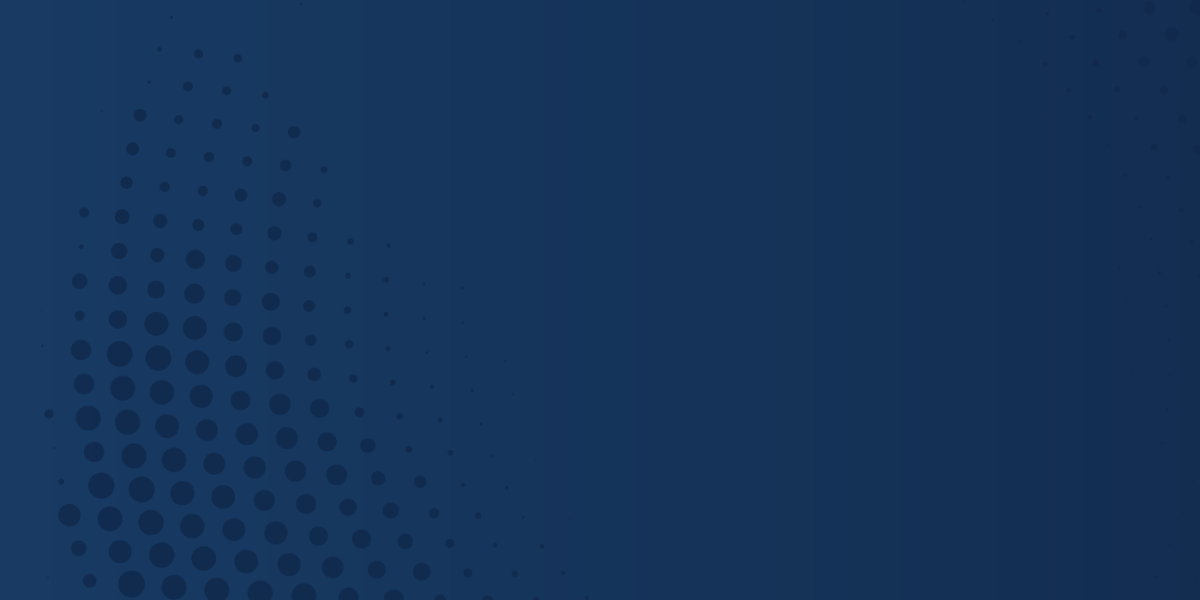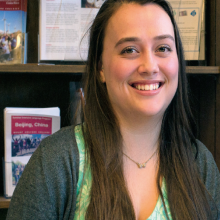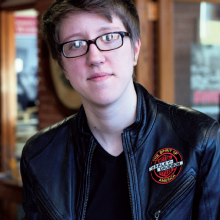2015 Comprehensive University of Virginia
Thomas Jefferson was the prototype of what every university today professes students need to become: a global citizen. The polyglot president, diplomat, scientist, inventor, and educator was friend to the Marquis de Lafayette and Simon Bolivar. He voiced hope that the university he founded in the foothills of the Blue Ridge Mountains in 1819 would stand as “the future bulwark of the human mind in this hemisphere.” He recruited five of eight original faculty from Great Britain. Most of the first 65 students journeyed to his “Academical Village” from outside Virginia.
But in modern times, it took until the end of the twentieth century for the University of Virginia (U.Va.) to take what Vice Provost for Global Affairs Jeffrey Legro called “a self-conscious turn to the world.” Building on its success as a top public research university, U.Va. made internationalization a central thrust of its two most recent strategic plans. Under former President John Casteen, it brought international students in far greater numbers to Charlottesville and appointed a vice provost for international affairs. On President Teresa Sullivan’s watch, it reorganized and expanded international programs, pushing students and faculty to venture far beyond the Blue Ridge and finding new ways to embed a culture of global awareness on the Grounds, as the 1,682-acre campus is called.
A Center for Global Health and an International Residential College, where 300 students (60 percent domestic, 40 percent international) live, were created after the 1999 strategic plan. But a faculty task force that looked across the Grounds in 2008 delivered the blunt assessment that while “the University of Virginia is by no means inactive internationally… neither is it a leader."
A Central Strategy and Shared Costs
Since then U.Va. has raised the international banner higher even while weathering diminished state support (but a swelling endowment, now $7 billion). In an institution with 11 independent schools—even separate business schools for undergraduate and graduate students—the president and provost found ways to pull academic fiefdoms together on internationalization. “The best part is that this is not just in the expected places. Everybody has embraced it,” said Sullivan, a sociologist who became president in 2010.
The opening of an office in Shanghai—U.Va.’s first overseas—in 2013 marked a milestone in the journey. Justin O’Jack, former China director for the Council on International Educational Exchange, was hired to run the China office with a mission of supporting research partnerships, academic programs, internships, admissions, alumni engagement, and career placement. The university sent a 20-person delegation, including a half-dozen senior leaders, to a two-day conference and ceremonial opening last March. More importantly, boasted former Executive Vice President and Provost John Simon, “I got all of the deans to contribute to the costs of the China office, so everyone has a stake.” Start-up costs were $150,000 and it costs $300,000 a year to operate.
Simon, departing after four years for the presidency of Lehigh University, said schools were accustomed to acting like “independent operators…that could do everything they want whenever they want.” Some had stellar overseas connections “but to me, the issues around global are a centralized strategy. I’m not saying the schools can’t do other things, but that’s not an institutional strategy.” He predicts U.Va. will plant its flag in half a dozen other locations within five years.
Location, Location, Location
Legro, a politics professor and vice provost for global affairs since 2012, chairs a Global Affairs Committee with representatives from all schools and major administrative units. A separate Global on Grounds Committee comprised of faculty, staff, and students is charged with developing new ways to integrate global content into the university experience.
A modest Center for International Studies made way for a more ambitious and deeper-pocketed Center for Global Inquiry and Innovation, which has been given prime space in a historic building in the shadow of Jefferson’s iconic Rotunda.
“It’s location, location, location,” said the center’s director, Brian Owensby, a Latin American historian. It shares space with a new Global Internship Program and a popular global studies major and can dispense $450,000 for research projects small and large. Two teams of environmental scientists split $100,000 awards last year. “Things are going gangbusters,” said Owensby.
The global internship director, Majida Bargach, placed 39 students in jobs in 2014 and 70 this summer. Bargach, a French lecturer who also leads a study abroad class to her native Morocco, said the interns gain the benefit of “a total immersion by themselves in the workplace.”
Student Demand for a Global Studies Major
The evolution of the global studies major attests to the strong voice and tradition of self-governance that students enjoy at U.Va., where they run the vaunted Honor System (exams are unproctored) and a galaxy of hundreds of organizations, many with an international focus.
Students on their own initiative began stumping in 2007 for a global development studies major, arguing in an 8,000-word white paper that U.Va. prepared too few students for careers fighting poverty. Richard Handler, a cultural anthropologist, stepped forward to direct the major in 2009. It’s now bundled into a larger global studies major with tracks on health, the environment, and security/justice.
“Universities these days are full of students who want to go around the world and do good work,” said Handler, who raised $1 million to hire a “professor of practice” to connect students with global development organizations.
Francesca Fiorani, a Renaissance art historian and associate dean, said the attraction of the major is not only for students but also for faculty. “We’re rethinking the traditional disciplines. It’s driving curriculum reform across the university.” Core courses range from economics to anthropology to sociology, all presented from a global perspective. “That’s what students want,” said Fiorani. ”They want to know how to operate with people from all over the world.”
The Center for Global Health has doubled to 55 the number of $5,000 awards to students to work in interdisciplinary teams on projects in developing countries. “In the past, people thought ‘global health’ was only for doctors and nurses, but it’s for the economists, educators, and engineers as well,” said Rebecca Dillingham, MD, the director.
Vanquishing the Fear of Missing Out
Two thousand students studied abroad in 2013– 2014. More might go but for a much-discussed malady known as FOMO, or the fear of missing out. U.Va. is a school rich with traditions, from secret societies to fall football to a spring steeplechase race. “We’re challenged to get more students to go abroad for a semester or year. That’s where a lot of our energy is going,” said Dudley Doane, director of the International Studies Office.
“They don’t want to miss any of their eight great semesters here. But it’s a bit of an urban myth. Nine of 10 who go abroad will tell you it was their most meaningful semester,” said Legro. McKenna Hughes, 22, an English and linguistics major and peer adviser in the International Studies Office, said, “The thing about traditions is they happen every year. We push them to realize they’ve got three other chances.”
Meg Gould, 22, spent a summer in Morocco and a full semester in Paris and was selected by peers for one of the coveted rooms for seniors behind the colonnade on the Lawn. She also represented students on the Board of Visitors. “U.Va. definitely opened the doors for me,” said the global studies and French major. “Amazing experiences can occur outside of Grounds.”
The International Studies Office partners with the Department of Anthropology to offer CORE (Cultural Orientation, Reflection, and Engagement) seminars to prepare students for crossing cultures and demystify the experience. “It’s a wrap-around curriculum,” said coordinator Catarina Krizancic, an anthropologist. “It isn’t enough to put people in a different language or culture. You have to mentor and teach them through it.”
This academic year is the last in which U.Va. is sponsoring the Semester at Sea program. It has provided a dean and sent other faculty and staff on the voyages since 2006.
Making Room for International Students
By law 70 percent of U.Va.’s 15,000 undergraduates must be Virginians. Nine hundred—5.5 percent—are international. It is twice as hard for out-of-staters to win admission, and even harder for international students. “The burgeoning of our reputation internationally” keeps driving up the number and quality of applications, said Richard Tanson, senior international student and scholar adviser.
International students can fall under the thrall of Charlottesville, too. “I cherish this U.Va. experience,” said “Grong” Yexiao Wang, a senior from Chengdu, China, majoring in math and political philosophy. Few friends at other campuses are “so fond of their schools.” Wang banded together with classmates to start a U.Va. China Fund that last February honored economics professor Kenneth Elzinga for his steadfast support— including driving a visiting Chinese scholar and his wife to the hospital one icy night in time to deliver their baby. The award is named for U.Va.’s first graduate from China, educator and diplomat Weiching Williams Yen, Class of 1900.
Sophomore Lexi Schubert, an economics and cognitive science major from Munich, Germany, leads a new organization called Global Greeters that helps students settle into college life. That was not a problem for Schubert, who speaks five languages and is learning Indonesian and Hungarian. “Studying in the U.S. was always a dream of mine.”
Rafat Khan, a senior from Dhaka, Bangladesh, cut a distinctive figure on campus with an upswept coif he calls “a faux-hawk.” He threw himself into a host of activities, including the Global on Grounds Committee, and worked to overcome the self-segregation of international students. “The ideal university environment is one where there’s a flowing, cross-cultural dialogue and people have friends from all over the world,” said the commerce major and philosophy minor. “U.Va. has done a good job, but there’s always room to grow.”
Humanities and Business in the Global Context
Befitting an institution whose founder once said that liberal education would help “guard the sacred deposit of [citizens’] rights and liberties,” U.Va. has partnered with other universities to uphold the place of the humanities in a globalized, business-minded world. The Institute of the Humanities and Global Cultures works with Delhi University, Nanjing Univer sity, Oxford University, and London’s School of Oriental and African Studies on a mission of connecting scholars “across conceptual, imaginative, and continental divides.” Two Mellon Foundation grants since 2011 topping $6 million are allowing the College and Graduate School of Arts and Sciences to hire 20 new interdisciplinary faculty and providing research funds for dozens of faculty and graduate students. The latest $3.5 million grant focuses on the Global South, including new courses and research on the histories and cultures of Africa, Latin America, and South and East Asia.
Fiorani, the associate dean, said U.Va. views itself as both an importer and exporter of humanities faculty. “All sorts of places across the globe have a strong interest in developing the liberal arts education for which the U.S. is uniquely famous.”
The bifurcated business schools, the Darden School of Business and McIntire School of Commerce, have stood in the vanguard of curriculum internationalization. Darden Dean Robert Bruner led a national task force that produced an encyclopedic report on The Globalization of Management Education. It found business schools innovating rapidly to globalize but also forecast a high failure rate for their experiments, which Bruner said “is actually indispensable because only by that will we identify a sustainable path or paths forward.”
McIntire Dean Carl Zeithaml, a global management strategy expert, was taken aback by a “lack of international orientation” when he came to Charlottesville in 1997. “I really felt that most people thought that the boundaries of the world were consistent with the boundaries of Albemarle County.” After a visit to Asia with other deans, he proposed opening an office there. “I guess I wasn’t very good at it because it took another 17 years,” he said wryly.
Back to the Future
Jefferson’s Rotunda was sheathed in scaffolding during the spring of 2015, undergoing renovations to make the old new again. The global offices in the Academical Village were also undergoing renovations to fit everything under one roof.
The university’s reinvigorated internationalization is a type of reconstruction, too, as U.Va. seeks to reclaim the legacy of America’s earliest global thinker. “That is our goal, and though there are challenges, we are well on our way to realizing it,” Legro said.

